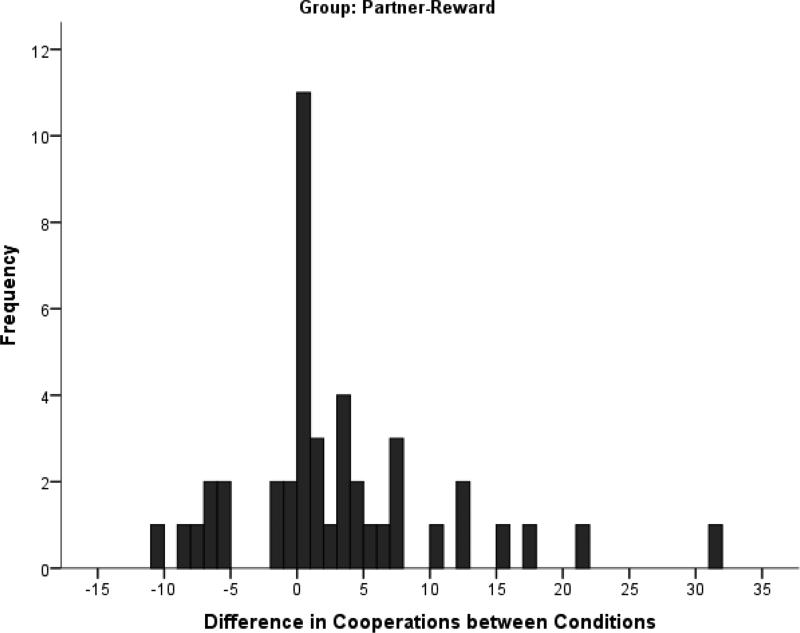Figure 4.
Within-subject differences in cooperation rates between conditions. The frequency distribution of differences between a player's cumulative cooperation in the 1-2-9-10 condition and that player's cumulative cooperation in the 1-2-3-4 condition (the order was counterbalanced). Although the vast majority did not show a difference, the mean of 2.61 was significantly greater than 0 ( t(43) = 2.18, p < .05.), which indicated a greater cooperation in the 1-2-9-10 condition.

